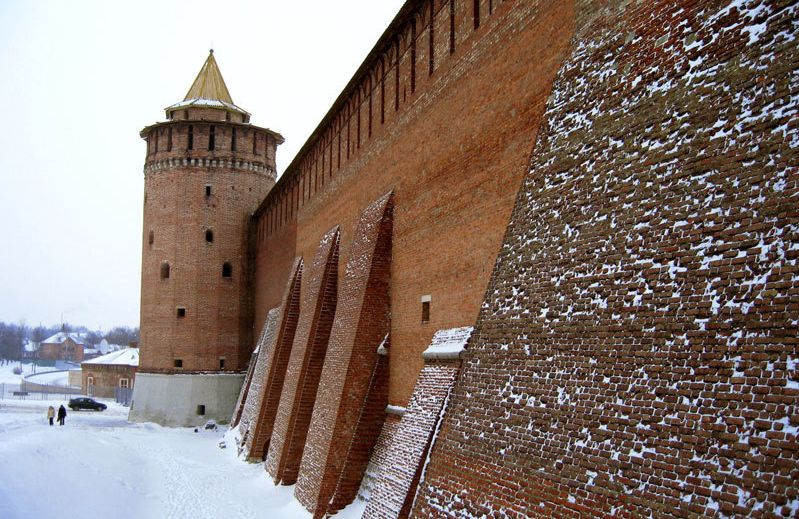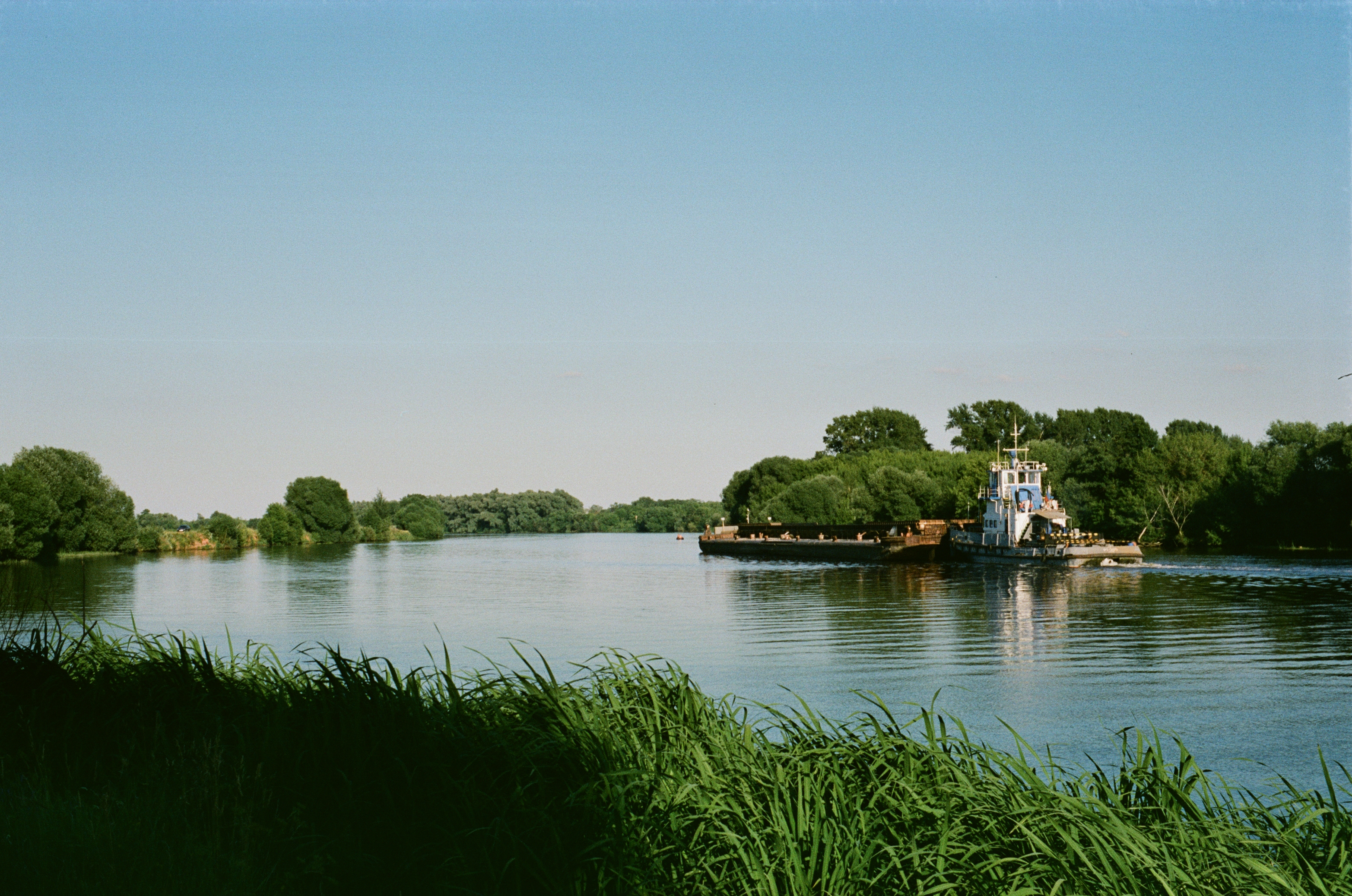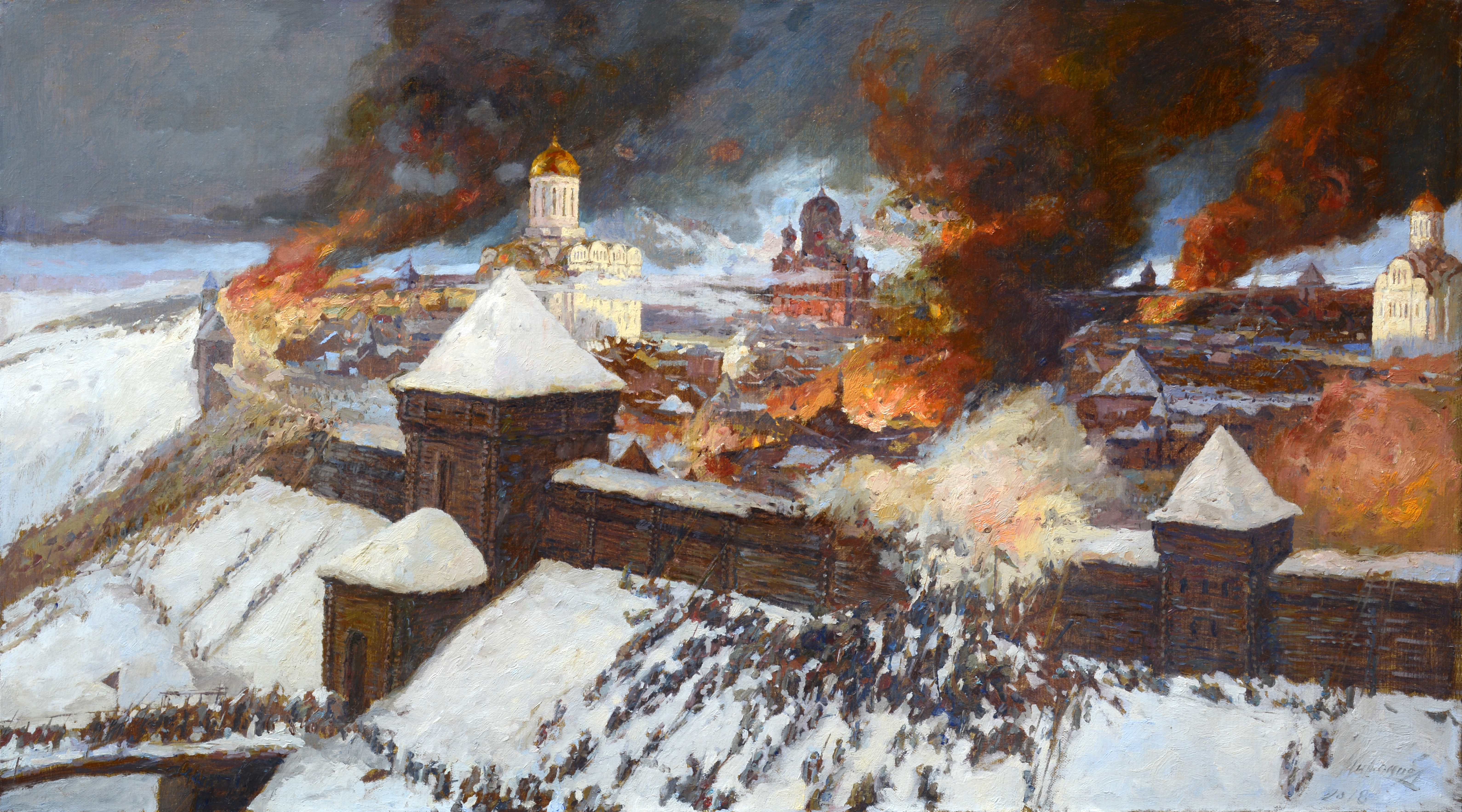|
Kolomna
Kolomna (, ) is a historic types of inhabited localities in Russia, city in Moscow Oblast, Russia, situated at the confluence of the Moskva River, Moskva and Oka Rivers, (by rail) southeast of Moscow. Population: History Mentioned for the first time in 1177, Kolomna was founded in 1140–1160 according to the latest archaeological surveys. Kolomna's name may originate from the Old East Slavic, Old Russian term for "on the bend (in the river)", especially as the old city is located on a sharp bend in the Moskva River, Moscow River. In January 1238, Kolomna was Siege of Kolomna, destroyed by a Mongol invasion of Kievan Rus', Mongol invasion. In 1301, Kolomna became the first town to be incorporated into the Moscow Principality. Like some other ancient Russian cities, it has a Kolomna Kremlin, kremlin, which is a citadel similar to the Moscow Kremlin, more famous one in Moscow and also built of red brick. The stone Kolomna Kremlin was built from 1525–1531 under the Russian Tsar ... [...More Info...] [...Related Items...] OR: [Wikipedia] [Google] [Baidu] |
Kolomna Kremlin
Kolomna Kremlin () is a fortress in Kolomna, Russia. The stone Kolomna Kremlin was built from 1525–1531 under the Russian Tsar Vasily III. Before its reconstruction in 1531, the Kolomna Kremlin was made of wood. On its territory there are many Russian churches and monasteries: The Uspensky cathedral, the Voskresenky church, the Spassky monastery (14th century), and a number of others. Architectural features There is a version that construction of the Kolomna Kremlin was headed by Italian architect Aleviz Fryazin Noviy, Aleviz Friazin, who participated in the construction of walls and towers of the Moscow Kremlin and took it as an example for the construction of the Kolomna Kremlin. This is indicated, for example, by the construction period of the Kolomna Kremlin. The Kremlin was built six years, which indicates that builders of the fortress had a great experience because comparable in scale construction in the capital lasted more than ten years. The Kolomna Kremlin, as well ... [...More Info...] [...Related Items...] OR: [Wikipedia] [Google] [Baidu] |
Siege Of Kolomna
The siege of Kolomna during December 1237–January 1238 was part of the Mongol invasion of Kievan Rus'. Following the Battle of Voronezh River in December 1237, Yuri II of Vladimir sent both of his sons with "all his men" and Voivode Yeremey to defend the fortress of Kolomna, which was on the border to the Wild Fields. Battle In Kolomna, the Vladimir-Suzdalian army met some of the Ryazan survivors from the Battle of Voronezh River led by Prince Roman Ingvarevich. After some heavy fighting under the walls of Kolomna, the young princes Vsevolod and Vladimir retreated to Vladimir and Moscow, respectively. The small Suzdalian force left in Kolomna was besieged and annihilated a few days after the destruction of Ryazan. This left the capital, Vladimir, open for the next Mongol-Tatar onslaught. Opposing forces According to Rashid-al-Din Hamadani, the contemporary historian of the Ilkhanate, Kolomna was the fiercest battle of the entire campaign: Kulkan, son of Genghis Khan, d ... [...More Info...] [...Related Items...] OR: [Wikipedia] [Google] [Baidu] |
Moscow Oblast
Moscow Oblast (, , informally known as , ) is a federal subjects of Russia, federal subject of Russia (an oblast). With a population of 8,524,665 (Russian Census (2021), 2021 Census) living in an area of , it is one of the most densely populated regions in the country and is the list of federal subjects of Russia by population, second most populous federal subject. The oblast has no official administrative center; its public authorities are located in Moscow and Krasnogorsk, Moscow Oblast, Krasnogorsk (the Moscow Oblast Duma and the local government), and also across other locations in the oblast.According to Article 24 of the Charter of Moscow Oblast, the government bodies of the oblast are located in the city of Moscow and throughout the territory of Moscow Oblast. However, Moscow is not named the official administrative center of the oblast. Located in European Russia between latitudes 54th parallel north, 54° and 57th parallel north, 57° N and longitudes 35th meridian ... [...More Info...] [...Related Items...] OR: [Wikipedia] [Google] [Baidu] |
Kolomensky District
Kolomensky District () is an administrativeLaw #11/2013-OZ and municipalLaw #43/2005-OZ district (raion), one of the thirty-six in Moscow Oblast, Russia. It is located in the southeast of the oblast and borders with Lukhovitsky, Ozyorsky, Stupinsky, Voskresensky, and with Yegoryevsky Districts and the territory of the City of Kolomna. The area of the district is . Its administrative center is the city of Kolomna (which is not administratively a part of the district). Population: 40,780 ( 2002 Census); Geography Main rivers flowing through the district are the Oka and the Moskva. They are relatively clean. History The district was established in 1929. Governance Administrative and municipal status Within the framework of administrative divisions, Kolomensky District is one of the thirty-six in the oblast. The city of Kolomna serves as its administrative center An administrative centre is a seat of regional administration or local government, or a county town, or the ... [...More Info...] [...Related Items...] OR: [Wikipedia] [Google] [Baidu] |
Moskva River
The Moskva (, ''Moskva-reka'') is a river that flows through western Russia. It rises about west of Moscow and flows roughly east through the Smolensk and Moscow Oblasts, passing through central Moscow. About southeast of Moscow, at the city of Kolomna, it flows into the Oka, itself a tributary of the Volga, which ultimately flows into the Caspian Sea. History According to recent studies, the current riverbed of the Moskva River was occupied about 12 thousand years ago. In addition to Finnic tribes, the Moskva River is also the origin of Slavic tribes such as the Vyatichi tribe. Etymology The name of the city is thought to be derived from the name of the river. Several theories of the origin of the name have been proposed. The most linguistically well-grounded and widely accepted is from the Proto-Balto-Slavic root *''mŭzg''-/''muzg''- from the Proto-Indo-European "wet", so the name ''Moskva'' might signify a river at a wetland or a marsh. Its cognates include , ... [...More Info...] [...Related Items...] OR: [Wikipedia] [Google] [Baidu] |
Battle Of Kulikovo
The Battle of Kulikovo () was fought between the forces of Mamai, a powerful Mongol military commander of the Golden Horde, and Russian forces led by Grand Prince Dmitry Donskoy, Dmitry of Moscow. The battle took place on 8 September 1380, at Kulikovo Field near the Don (river), Don River (now Tula Oblast, Russia) and was won by Dmitry, who became known as ''Donskoy'' ("of the Don") after the battle. Although the victory did not end Mongol domination over Russia, it is traditionally regarded as the turning point at which Mongol influence began to wane and Moscow's power began to rise. The battle would allow Moscow to strengthen its claims of ascendancy over the other Russian principalities, in which it would ultimately become the centre of a centralized Russian state. Background Following the Mongol invasion of Rus' in the 13th century, the numerous principalities became Political divisions and vassals of the Mongol Empire, vassals of the Golden Horde. During this period, the p ... [...More Info...] [...Related Items...] OR: [Wikipedia] [Google] [Baidu] |
Oka River
The Oka (, ; ) is a river in central Russia, the largest right tributary of the Volga. It flows through the regions of Oryol, Tula, Kaluga, Moscow, Ryazan, Vladimir and Nizhny Novgorod and is navigable over a large part of its total length, as far upstream as the town of Kaluga. Its length is and its catchment area .«Река Ока» Russian State Water Registry The Russian capital sits on one of the Oka's tributaries—the Moskva, from which the capital's name is thought to be derived. Name and history The Oka river was the homeland of the Easter ...[...More Info...] [...Related Items...] OR: [Wikipedia] [Google] [Baidu] |
Zasechnaya Cherta
The Zasechnaya cherta () was a chain of fortification lines, created by Grand Duchy of Moscow and later the Tsardom of Russia to protect it from the Crimean-Nogai Raids that ravaged the southern provinces of the country via the Muravsky Trail during the Russo-Crimean Wars. It was south of the original line along the Oka River. It also served as a border between the Muscovite State and the steppe nomads. As a fortification line stretching for hundreds of kilometers, the Great Abatis Border is analogous to the Great Wall of China and the Roman limes. Abatis is a military term for a field fortification made by cutting down trees. The line was built from the felled trees arranged as a barricade and fortified by ditches and earth mounds, palisades, watch towers and natural features like lakes and swamps. The width of the abatis totalled up to several hundred meters. In the most dangerous places the abatis was doubled, trebled etc., the gates and small wooden fortresses were cre ... [...More Info...] [...Related Items...] OR: [Wikipedia] [Google] [Baidu] |
Moscow Principality
The Grand Principality of Moscow, or Muscovy, known as the Principality of Moscow until 1389, was a late medieval Russian monarchy. Its capital was the city of Moscow. Originally established as a minor principality in the 13th century, the grand principality was transformed into a centralized Russian state in the late 15th century. Moscow became a separate principality when Daniel (), the youngest son of Alexander Nevsky, received the city and surrounding area as an appanage. By the end of the 13th century, Moscow had become one of the leading principalities within the Vladimir grand principality, alongside Tver. A struggle between the princes of Moscow and Tver began after Mikhail of Tver became grand prince in 1304. Yury () contested the title and was later made grand prince in 1318 by the khan of the Golden Horde, who held suzerainty over the princes. However, Yury lost the title four years later. Ivan I () regained the title of grand prince and was able to colle ... [...More Info...] [...Related Items...] OR: [Wikipedia] [Google] [Baidu] |
Administrative Divisions Of Moscow Oblast
This is a list of the administrative and municipal divisions of Moscow Oblast, a federal subject of Russia. Moscow Oblast is located in the Central Federal District of Russia, and surrounds Moscow, the capital of Russia. While Moscow hosts the majority of the government bodies of the oblast, it does not officially serve as the oblast's administrative center and is not otherwise associated with the oblast either administratively or municipally. The oblast is, like other Russian federal subjects, subdivided for the purposes of the state administration and for the purposes of the local self-government, the rights to which are guaranteed by the Constitution of Russia. While the administrative and municipal divisions are not required by law to be identical, the system of municipal divisions in Moscow Oblast, having been created on the basis of existing administrative divisions, has only minor differences from the system of administrative divisions. History The oblast was esta ... [...More Info...] [...Related Items...] OR: [Wikipedia] [Google] [Baidu] |
Dmitry Donskoy
Dmitry Ivanovich Donskoy (; 12 October 1350 – 19 May 1389) was Prince of Moscow from 1359 and Grand Prince of Vladimir from 1363 until his death. He was the heir of Ivan II. He was the first prince of Moscow to openly challenge Mongol authority in Russia. In traditional Russian historiography, he is regarded as a Russian national hero and a central figure of the Russian Middle Ages. His nickname, Donskoy ("of the Don"), alludes to his great victory against the Tatars in the Battle of Kulikovo (1380), which took place on the Don River. He is venerated as a saint in the Orthodox Church with his feast day on 19 May. Early reign Dmitry was born in Moscow in 1350, the son of Ivan the Fair, Grand Prince of Moscow, and his second wife, Alexandra Vassilievna Velyaminova, the daughter of the mayor of Moscow. Dmitry was orphaned at the age of nine and ascended the throne of the Principality of Moscow. Per the terms of Ivan's will, during Dmitry's minority, Metropolitan Alek ... [...More Info...] [...Related Items...] OR: [Wikipedia] [Google] [Baidu] |
Mongol Invasion Of Kievan Rus'
The Mongol Empire invaded and conquered much of Kievan Rus' in the mid-13th century, sacking numerous cities such as Principality of Ryazan, Ryazan, Principality of Yaroslavl, Yaroslavl, Principality of Pereyaslavl, Pereyaslavl and Vladimir-Suzdal, Vladimir, including the largest: Grand Principality of Kiev, Kiev (50,000 inhabitants) and Principality of Chernigov, Chernigov (30,000 inhabitants). The Siege of Kiev (1240), siege of Kiev in 1240 by the Mongols is generally held to mark the end of the state of Kievan Rus', which had already been undergoing Feudal fragmentation, fragmentation. Many other principalities and urban centres in the northwest and southwest escaped complete destruction or suffered little to no damage from the Mongol invasion, including Kingdom of Galicia–Volhynia, Galicia–Volhynia, Pskov Land, Pskov, Principality of Smolensk, Smolensk, Principality of Polotsk, Polotsk, Principality of Vitebsk, Vitebsk, and probably Vladimir-Suzdal, Rostov and Uglic ... [...More Info...] [...Related Items...] OR: [Wikipedia] [Google] [Baidu] |







